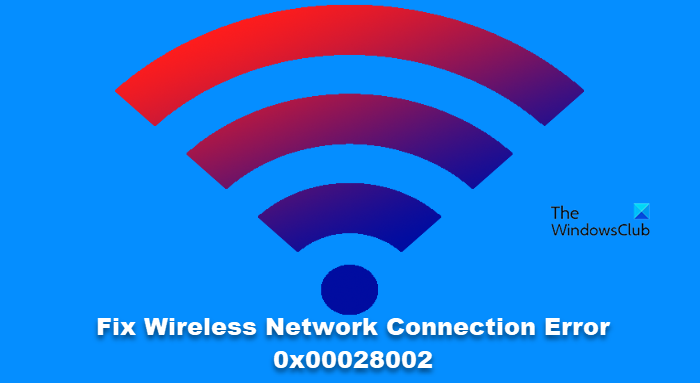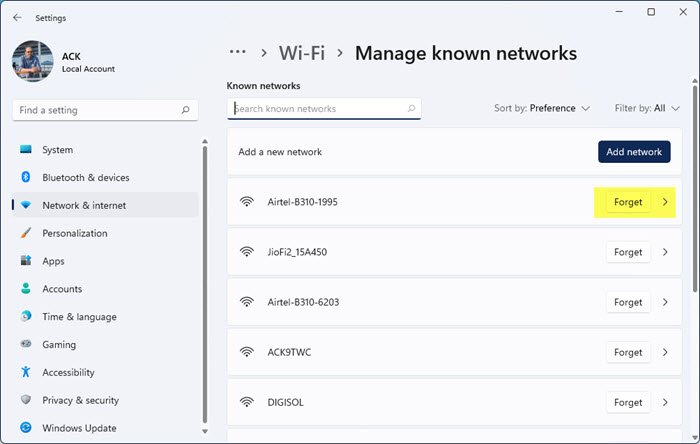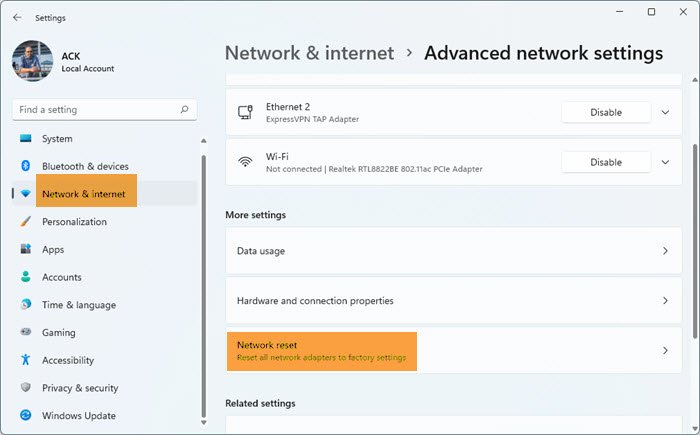Network inconsistency in any form is the main factor behind 0x00028002 and the reason is that it stop the PC from staying connected to a local network. The error code mainly pops at the time of running the Windows Network Diagnostics Troubleshooters to check the problem.

What’s causing the Network Connection Error 0x00028002?
The issue can be because of some glitch in Network Driver. Sometimes, when our computer enters sleep or hibernation mode, its network driver can experience some issue, and hence, you may see this error.
One of the reasons for this error is the outdated Network Adapter, which is the result of you not updating them once in a while. A faulty Router can also cause this error.
We will be discussing how to solve all these issues and more, in this article.
Fix Wireless Network Connection Error 0x00028002
If you are seeing Wireless Network Connection Error 0x00028002, then first of all update your Window. After updating your computer, use the solutions written below to resolve the issue.
- Forget the wireless network
- Update Network Adapter
- Restart Router
- Disable IPv6 if your ISP doesn’t support it
- Use Network Reset
- Replace your Router
Let’s get to know them in detail.
1] Forget the Wireless Network

A normal network glitch happens all the time and it can be the reason, if that’s the reason then it should go away on your regular startups but if are used to putting your PC in hibernation then you can resolve it by forgetting the connected networks.
Steps are given below showing how to do so.
- Open the Run dialogue box by hitting Win+R, enter ms-settings:network-wifi, click OK. The network and Internet window will open.
- Click Manage known networks.
- Now click on the Forget button of the connected network.
After forgetting the network, join the network again and see if the Network Connection Error still persists. The error is still appearing then the next fix is given below.
2] Update Network Adapter
As mentioned earlier, the issue can be because of an outdated Network Adapter Driver. So, you need to update the Network Adapter Driver and see if the issue persists.
3] Restart Router
It is advisable to restart your Router and see if the issue persists. By restarting the router, you can fix the issue if it is because of some glitch. So, unplug your Router and Modem, wait for a minute or two, plug them back in and check if the issue persists.
4] Disable IPv6 if your ISP doesn’t support it
If your ISP doesn’t support IPv6 then you should disable the protocol. To disable IPv6 in Windows 11/10, open PowerShell as an administrator and run the following command.
Use the following command to see all the adapters.
Get-NetAdapterBinding -ComponentID ms_tcpip6
To disable a specific network adapter, use the following command.
Disable-NetAdapterBinding -Name <Adapter Name> -ComponentID ms_tcpip6
Note: Replace <Adapter Name> with the one you want to disable.
After doing this, restart your router and computer, and try reconnecting and see if the issue persists.
5] Use Network Reset

Use the Use Network Reset button and see if that works for you.
6] Replace your Router
Last but not least, the issue can be because of a faulty Router. So, if all else fails, then, unfortunately, you have to replace your Router. Do that, and hopefully, you won’t see the issue again.
Hopefully, you are able to fix the issue with the given solutions.
How do I reset my Router?
First of all, make sure your router is plugged. Then look for the Reset button on the back of your Router. You can use a paperclip or a pin to hold on to the reset button for 30 seconds. Now, turn on your Router and set it accordingly.
Read Next:
Leave a Reply